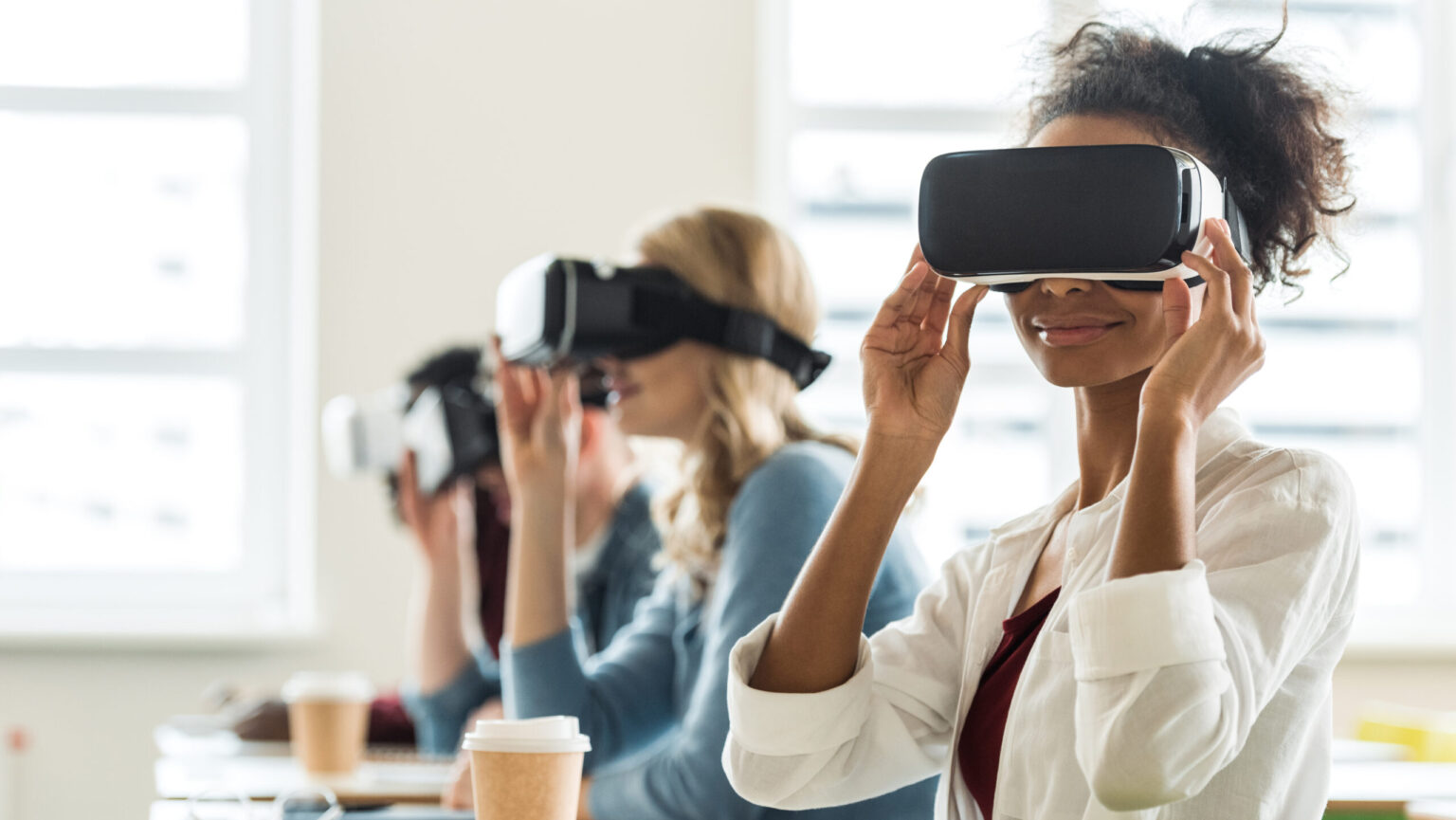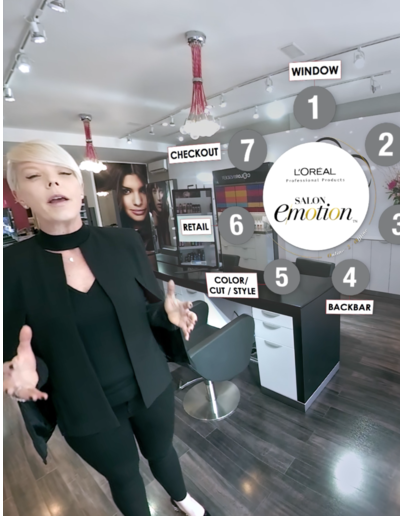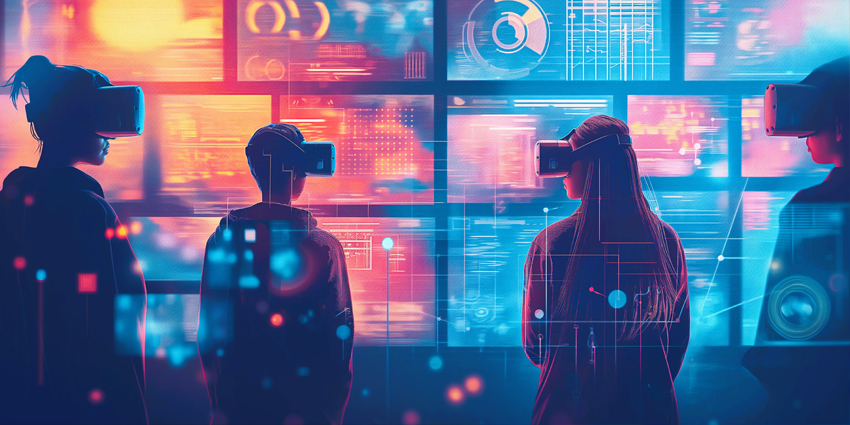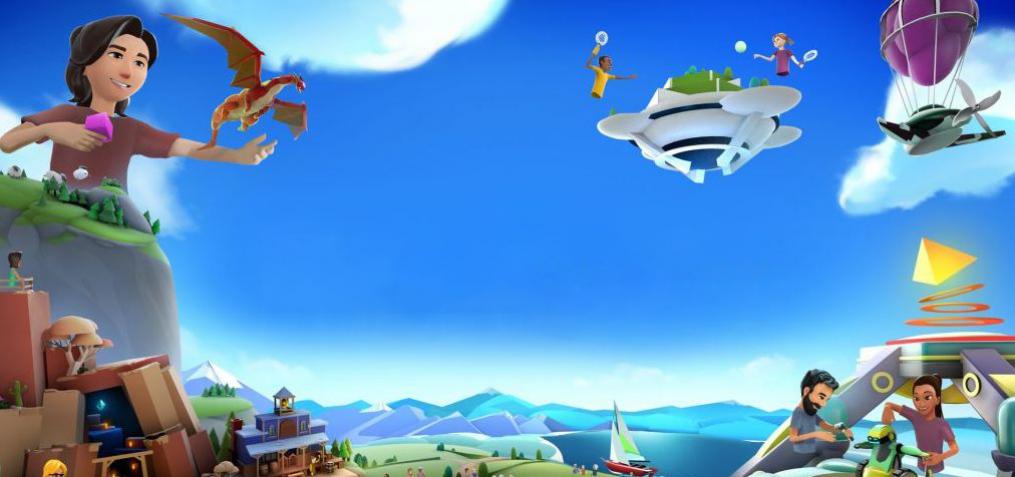What is immersive learning?
Immersive learning is revolutionising the education landscape by leveraging technologies like Virtual Reality (VR), Augmented Reality (AR), and Mixed Reality. It goes beyond traditional methods, providing learners with dynamic and interactive experiences that simulate real-life scenarios. At Metaverse Learning, we recognise the transformative power of immersive learning in fostering skill development and ensuring success in diverse careers.
Types of Immersive Learning Experiences
Immersive learning experiences extend beyond VR and AR. Adaptive learning platforms, comparative judgement, and 360-degree films contribute to a rich and diverse educational landscape.
Virtual Reality (VR) for Immersive Learning
In immersive learning, VR is deployed to transport learners to a virtual world where they can engage with and experience various scenarios. This technology offers a fully immersive and interactive experience, isolating users from the physical world and placing them in a simulated learning environment.
VR is particularly effective for scenarios where real-world experiences are impractical or unsafe. It allows learners to practice skills, explore environments, and simulate tasks in a controlled and realistic setting, contributing to a highly immersive and impactful learning experience.
Augmented Reality (AR) for Immersive Learning
AR is deployed to enrich the learning experience by providing additional, contextually relevant information. Learners can interact with and manipulate virtual objects in real-time within their actual environment. AR is often used to enhance practical training scenarios, allowing users to visualise and practice tasks in a realistic setting, facilitating a more engaging and hands-on learning experience.
Adaptive Learning Platforms
Adaptive learning platforms respond to users’ questions and adjust content based on their understanding. These platforms leverage data to create personalised educational experiences, presenting opportunities for both students and adults to benefit from richer, more tailored learning.
Comparative Judgement
Comparative judgement, a technique dating back to the 1920s, has found its way into software for open-ended tasks. This approach is ideal for assessments involving subjective judgments, offering a valuable tool for schools and organisations to evaluate tasks such as reviewing personal statements, CVs, or assessing creative work like logo design.
Overcoming Challenges in Shifting to New Learning Methods
The adoption of new learning technologies, including immersive learning, comes with its set of challenges. Organisations must focus on improving people’s understanding of the science behind learning and thinking. Clearly communicating the shift to new learning methods within workplaces and classrooms is essential to fostering a culture of lifelong learning.
The Challenging Shift to New Ways of Learning
The shift to new learning methods parallels the challenges faced by individuals striving to learn complex skills. Immersive learning technologies play a potential role in helping learners break down complex skills into manageable components, practise them individually, and then seamlessly integrate them into a holistic skill set.
What is VR used for in education?
Virtual Reality in education transcends its initial applications in high-risk environments. While it was traditionally employed for training scenarios involving dangerous machinery, the scope has expanded. VR is now a versatile tool for practising soft skills, such as customer interaction, and creating simulations for educators, offering a nuanced approach to learning and skill development.
What are VR classrooms?
VR classrooms represent a paradigm shift in education. They allow educators and students to transcend physical boundaries and engage in virtual environments. This not only enhances the learning experience but also facilitates a more personalised and flexible approach to education.
What are the three types of VR?
Virtual Reality encompasses three main types: non-immersive, semi-immersive, and fully immersive. Each type varies in the degree of immersion it offers. Non-immersive VR, like desktop simulations, provides a basic level of interaction. Semi-immersive VR, such as VR classrooms, increases engagement, while fully immersive VR, experienced through headsets, offers a profound sense of presence.
The Impact on Learning and Engagement
The immersive nature of VR has a profound impact on the learning process. Students exposed to VR learning environments exhibit increased confidence, engagement, and a deeper understanding of complex subjects. In fact, studies have shown that VR learners are 40% more confident in applying what they’ve learned, and their engagement during classes is 150% higher.
What are the pros and cons of VR in education?
Advantages of virtual reality in education
Virtual Reality (VR) has transcended its status as a rare luxury, becoming a readily accessible platform for immersive experiences that are reshaping education. But before we delve into the different ways you can deliver immersive learning experiences, let’s take a look at the top 10 benefits that VR education offers:
Immersive Learning Environments
VR education provides immersive learning experiences, allowing students to step into realistic three-dimensional environments. This level of immersion enhances engagement and helps in creating a more profound understanding of complex subjects.
Enhanced Retention
Studies, such as the one conducted by the University of Warwick, indicate that students using VR tend to remember study materials better compared to traditional learning methods. The experiential nature of VR facilitates improved retention of information.
Increased Student Engagement
The immersive and interactive nature of VR captures students’ attention and fosters active participation in the learning process. Increased engagement can lead to a more positive learning experience and improved outcomes.
Catering to Different Learning Styles
VR accommodates various learning styles by providing a range of experiences. Whether visual, auditory, or kinesthetic, students can engage with content in ways that suit their individual learning preferences, contributing to a more inclusive educational experience.
Boost in Confidence
VR learning environments offer a safe space for students to explore and interact. Studies show that VR learners exhibit increased confidence, with a 40% higher confidence level in applying what they’ve learned compared to traditional methods.
Flexible Learning Environments
VR allows learning to occur in diverse settings. From virtual classrooms to simulated field trips, this flexibility in learning environments caters to different educational needs, making education accessible beyond traditional boundaries.
Cost-Effective Virtual Field Trips
VR enables virtual field trips to historical sites, nature reserves, and other locations, eliminating the need for costly physical travel. This cost-effectiveness makes educational experiences accessible to a wider range of students.
Real-world Applications in Professional Training
Beyond traditional education, VR finds applications in professional training across industries. For example, the US Air Force employs VR in pilot training, showcasing the technology’s effectiveness in practical skill development.
Enrichment of Traditional Subjects
VR enriches the learning experience in traditional subjects like Geography, History, Art, and Science. Students can explore historical events, visit far-off places, and engage with subjects in ways that were previously challenging or impossible in traditional settings.
Global Collaboration
VR facilitates global collaboration by connecting students and educators from different parts of the world. Virtual classrooms and collaborative projects foster a sense of global awareness and prepare students for a connected, internationalised future.
Disadvantages of Virtual Reality Education
Human Connection
While VR offers a rich learning experience, it may lack the personal touch of human connection. Striking a balance between immersive technology and human interaction remains crucial in educational settings.
Lack of Flexibility
Despite its advantages, VR may present challenges in terms of flexibility. Integrating VR into educational systems requires careful planning and adaptation to ensure seamless implementation.
Technology Issues
Technical challenges, such as the need for specialised hardware and potential issues with VR systems, can pose obstacles to the widespread adoption of VR in education.
Augmented Reality in Education
What is Augmented Reality?
Augmented Reality (AR) overlays digital content onto the real world, creating a blended experience. This technology has transformative potential in education by enhancing interactivity and bringing learning to life.
How Can Augmented Reality Be Used in Education?
AR in education opens new possibilities. It can transform textbooks into interactive 3D models, add informational layers to real-world objects, and create engaging learning experiences beyond the traditional classroom setting.
What are the pros and cons of AR in education?
Advantages of Augmented Reality in Education
Interactivity
AR fosters interactivity by superimposing digital content onto the physical world. This enhances engagement and creates a dynamic learning environment.
Engagement
Similar to VR, AR captivates learners and keeps them actively involved in the learning process. The interactive nature of AR contributes to sustained interest.
Knowledge Retention
AR’s ability to provide visual and interactive content contributes to better knowledge retention. Learners can explore complex concepts in a more intuitive manner.
Gamification
Integrating gamification elements into AR experiences makes learning enjoyable and motivates students to participate actively in educational activities.
Disadvantages of Augmented Reality in Education
Technical Limitations
AR may face technical limitations, especially in terms of hardware requirements and the need for compatible devices. Overcoming these challenges is crucial for widespread adoption.
E-waste
As with any technological advancement, the introduction of AR devices can contribute to electronic waste. Sustainable practices should be considered in the integration of AR in education.
Energy Consumption
The use of AR devices may increase energy consumption. Striking a balance between technological benefits and environmental impact is essential.
The Future of Immersive Learning
The need for continuous learning throughout life, coupled with the challenges of balancing work and learning, has paved the way for immersive learning to become a cornerstone in education.
Lifelong Learning and the Shift in Education
The advent of immersive learning aligns with the top global trend identified by Deloitte: learning in the flow of life. Lifelong learning has become imperative, with individuals realising the need to continuously update their skills. This shift challenges the traditional divide between modes of learning and working, emphasising the importance of seamlessly integrating learning into daily life.
Best Practices for Effective Immersive Learning
Is Immersive is the Right Learning Tool for You?
Before committing to an immersive learning program, it’s crucial to assess whether immersive technologies align with learning objectives. Immersive learning should complement other forms of learning, ensuring it adds value to the educational experience.
Choosing the Right Technology for the Job
Selecting the appropriate immersive technology is paramount. Considerations include subject matter, shared experiences, physical space, time constraints, and budget. Age appropriateness and compatibility with learning goals should guide the choice of technology.
Clear Onboarding & Safe Environment
To facilitate a positive immersive learning experience, clear onboarding processes are essential. Learners should receive simple instructions on hardware usage, expectations, and how to exit an experience if discomfort arises. Friendly avatars can guide learners through the immersive journey.
Planning Your Structure
Immersive learning experiences require a different approach to planning. Learners have more control, necessitating careful anticipation of different scenarios. Short, focused experiences are generally more effective, with a recommended duration of around 20 minutes even for experienced users.
Keeping it Learner-focused
Tailoring immersive learning to the user is paramount. Consider the learner’s technological proficiency and tolerance for duration. Immersive learning should be seen as a complement to traditional methods, enhancing the overall educational experience.
Join the VR Education Revolution
The future of education lies in the seamless integration of immersive learning technologies. VR, AR, and other immersive experiences offer unparalleled advantages in engaging learners, fostering critical thinking, and improving knowledge retention.
As we navigate this educational transformation, it is essential to consider best practices, overcome challenges, and remain grounded in research to maximise the potential of immersive learning.
At Metaverse Learning, we are at the forefront of this revolution, shaping the future of education through collaborative, immersive, and transformative learning experiences. Join us as we embark on this exciting journey to redefine education in the digital age.
Accessing Metaverse Learning is straightforward, we’ve adapted our deployment methods to fit the technology you’re comfortable with – be it a desktop, laptop, tablet, or headset. Our programs cater to your preferred learning environment, offering additional versatility with SCORM compatibility for easy integration into your curriculum.
Recognising the need for continuous adaptation, our programs are regularly updated to align with current occupational standards and legislative requirements. We aim not just to provide education but to tailor it to meet the evolving demands of the world.
Our commitment extends beyond delivering exceptional programs. We emphasise a partnership approach, understanding that your success is intertwined with ours. Choosing Metaverse Learning means our dedicated customer success team becomes your ally, assisting you in the setup process and seamlessly integrating our programs into your educational journey.
We offer training sessions for you and your team, acknowledging that success is a collaborative effort, and our team is here to support you every step of the way.
Quelle:




